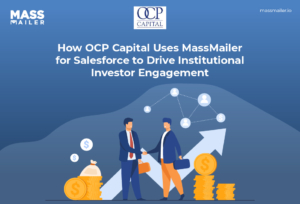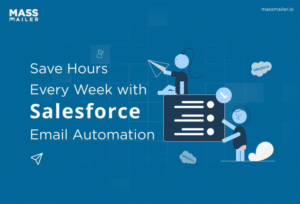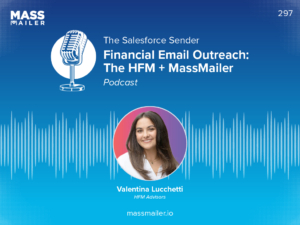Table of Contents
Introduction
The team stared at the inbox. The room was quiet, except for the steady tick, tick, tick of the clock. Every refresh showed the same screen. No replies. No clicks. Just silence.
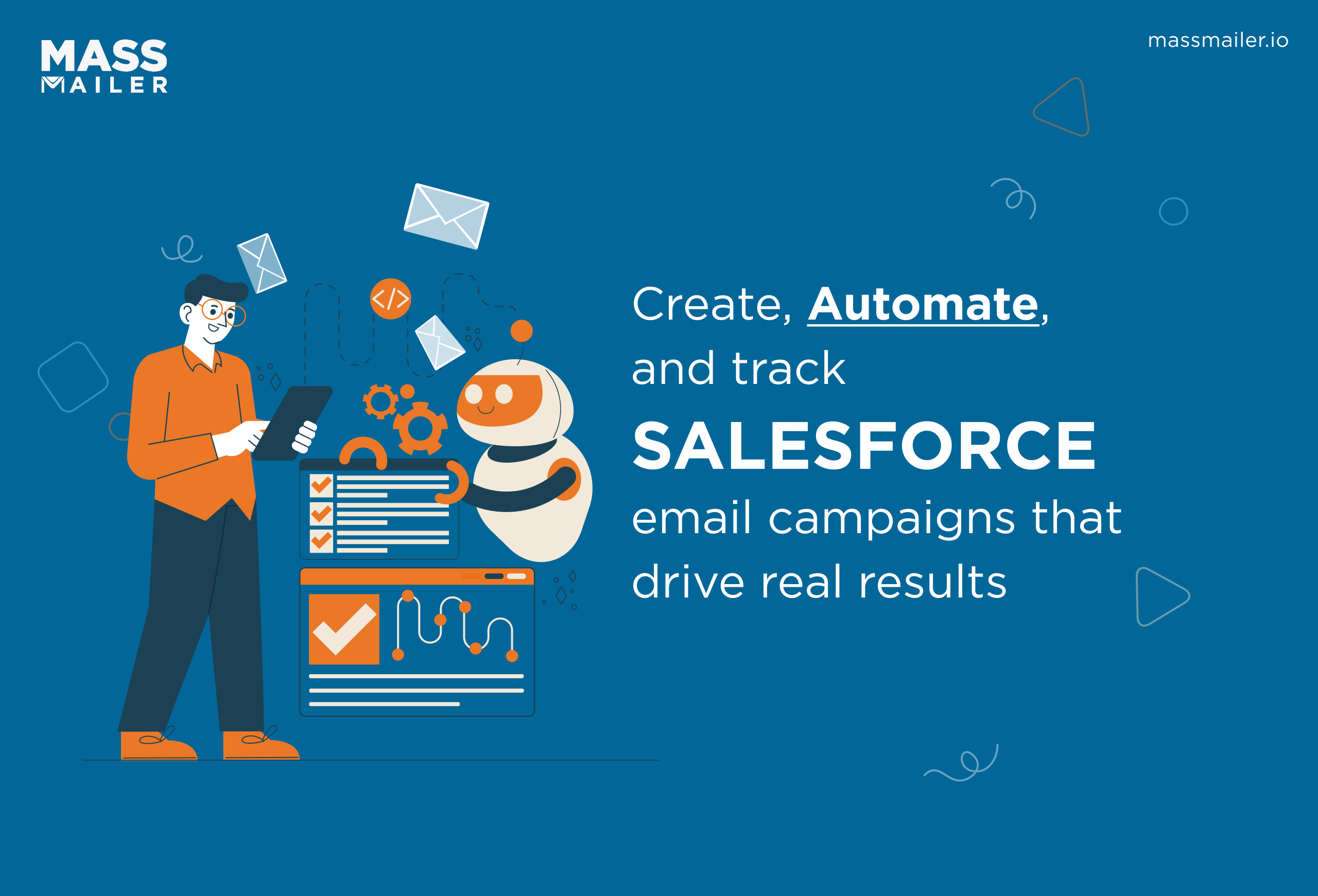
Then came the voice from across the room. “Why didn’t we get any response?” The campaign looked flawless, yet nothing worked. The issue wasn’t the email. It was the gap between our campaigns and the data sitting quietly in Salesforce.
When email campaigns use Salesforce data, everything becomes clearer. You can see who opens, who clicks, and who turns into a customer. According to Design Rush’s CRM report, companies that use CRM-based campaigns see a 29 percent increase in sales.
This guide will show you how to create Salesforce email campaigns that bring real results. You’ll learn simple, data-backed methods to plan, send, and measure campaigns that reach the right people and make an impact.
Why Salesforce is ideal for email campaigns
Salesforce is ideal for email campaigns because it connects marketing, sales, and customer data in one platform. Instead of relying on disconnected tools, you can build, send, and track every campaign directly inside your CRM. This helps teams improve targeting, automate follow-ups, and measure ROI from the same dashboard.
What Salesforce email campaigns are and how they work?
A Salesforce email campaign is a structured way to plan, send, and analyze marketing emails within the Salesforce CRM. Each campaign acts as a container that tracks leads, contacts, and responses, helping teams link engagement to real business outcomes.
Key functions include:
- Campaign object tracking: Each email campaign records sends, opens, clicks, and conversions.
- Campaign hierarchies: Parent and child campaigns help organize related initiatives like product launches or drip series.
- Member statuses: Track each recipient’s journey (Sent, Opened, Clicked, Responded) within Salesforce.
- Reports and dashboards: Visualize performance data across teams in real time.
- CRM integration: Link campaigns to opportunities and revenue for complete marketing attribution.
These features make Salesforce email campaigns not just a sending tool but a full reporting system for marketing performance.
Key benefits of managing campaigns within Salesforce CRM
Running email campaigns in Salesforce CRM offers several measurable benefits:
- All-in-one view of customers: All contact, lead, and opportunity data lives in one system, reducing silos.
- Better targeting: Use Salesforce filters to segment audiences by lifecycle stage, location, or engagement.
- Automated workflows: Trigger follow-up tasks, nurture sequences, or drip emails automatically after key actions.
- ROI tracking and attribution: Use the Campaign Influence model to connect emails to pipeline and closed deals.
- Improved data accuracy: Real-time CRM syncing ensures lists are current, minimizing bounce rates and improving deliverability.
Each of these factors supports data-driven, scalable Salesforce email marketing campaigns that directly impact revenue.
How Salesforce campaigns compare with mass email tools
Unlike standalone email platforms, Salesforce connects every send to the bigger business picture. It goes beyond open and click metrics to show how campaigns influence opportunities and revenue.
| Feature | Typical Email Tool | Salesforce Campaigns |
| Tracking | Opens, clicks | Opens, clicks, conversions, influenced revenue |
| Integration | Limited CRM sync | Native integration with leads, contacts, and opportunities |
| Automation | Basic scheduling | Advanced workflow automation through Salesforce Flow |
| Reporting | Campaign-level | Full-funnel performance and ROI tracking |
| Personalization | Basic merge fields | Dynamic segmentation from CRM data |
In short, Salesforce email campaigns outperform standard email tools because they’re data-driven, measurable, and deeply connected to the customer lifecycle.
Best practices for successful email campaigns
To build effective Salesforce email campaigns, start by applying proven marketing principles that work across industries. These best practices help teams create relevant, high-performing campaigns that engage audiences, protect deliverability, and improve return on investment.
Define clear goals and target segments
Every high-performing Salesforce campaign begins with a clear goal and a focused audience. Without these, even the best message fails to connect.
- Start by setting one specific goal for each campaign, such as increasing webinar sign-ups by 20 percent or converting 15 percent of trial users into paying customers.
- Use Salesforce CRM fields like lead status, opportunity stage, or industry to create precise audience segments.
- Group similar contacts under a Salesforce Campaign and assign Campaign Member Statuses such as Sent, Opened, or Responded to track their journey.
- Build reports and dashboards that show which segments generate the most engagement or revenue.
- Align campaign goals with sales objectives so both teams work toward measurable outcomes, such as lead conversions or deal acceleration.
Once your audience and goals are clear, the next step is creating messages that capture attention.
Create engaging, mobile-friendly email designs
A well-designed email improves readability, brand trust, and engagement. Salesforce provides responsive templates that help you deliver consistent experiences across devices.
- Choose a mobile-friendly layout in Salesforce or MassMailer that adjusts automatically to different screen sizes and devices.
- Keep your message clear and concise, using short paragraphs, simple fonts, and enough white space for easy scanning.
- Place your main call-to-action button above the fold so recipients see it immediately.
- Use Salesforce’s Email Studio or send a preview feature to test rendering in clients like Gmail, Outlook, and Apple Mail.
- Compress images and maintain a balanced text-to-image ratio to improve deliverability and reduce loading time.
With your design set, the next step is making every message personal and relevant.
Personalize content for better engagement
Personalization turns standard Salesforce email campaigns into conversations. It builds trust and relevance, encouraging higher open and response rates.
- Use merge fields in Salesforce to include details like recipient name, company, or recent purchase.
- Create dynamic content blocks that change based on audience attributes such as location, past interactions, or product interests.
- Automate behavior-based triggers with Salesforce Flow to send follow-ups when a recipient clicks a link or fills out a form.
- Adjust send times using time zone data from the CRM so each email arrives when your audience is most active.
- According to McKinsey’s 2024 report, personalized marketing efforts deliver up to 40 percent higher conversion rates, proving that relevant content drives engagement.
Once personalization is in place, the foundation for deliverability becomes critical.
Maintain clean lists and ensure deliverability
Good data equals good performance. Salesforce helps you maintain accurate lists and a strong sender reputation, which ensures your messages reach inboxes instead of spam folders.
- Only use verified opt-in lists gathered through forms, events, or previous interactions in Salesforce. Avoid purchased lists that can harm your sender score.
- Use Salesforce reports to identify inactive, bounced, or duplicate contacts and remove them regularly from campaigns.
- Set up domain authentication protocols such as SPF, DKIM, and DMARC to improve credibility with mail servers.
- Track bounce, complaint, and unsubscribe rates directly in Salesforce reports to catch problems early.
- Follow privacy laws like GDPR and CAN-SPAM by including clear opt-out links, accurate sender information, and respecting contact preferences stored in CRM records.
With list quality secured, you can now measure and optimize campaign performance to keep improving over time.
Test, optimize, and track key metrics
Testing and optimization help you refine Salesforce email campaigns for consistent improvement. The built-in reporting and analytics tools in Salesforce make this process simple and measurable.
- Use test sends or sandboxes in Salesforce to review personalization fields, links, and formatting before launching.
- Conduct A/B tests by changing one element at a time, subject lines, CTAs, or visuals, to learn what your audience responds to best.
- Track key metrics such as open rate, click-through rate, conversion rate, bounce rate, and unsubscribe rate to identify trends.
- Create dashboards that combine campaign performance with opportunity data using Campaign Influence to see the impact on revenue.
- Use these insights to refine future sends, improving targeting, content, and timing based on what the data shows.
Following these best practices helps you build Salesforce email campaigns that are consistent, data-driven, and customer-focused. When strategy, design, and technology work together, every email you send has a clear purpose and a measurable impact.
How to create and manage Salesforce email campaigns
Creating and managing Salesforce email campaigns involves setting up the right campaign structure, building targeted segments, automating workflows, designing effective templates, and keeping deliverability high.
Each step connects your marketing with measurable sales results.
Set up campaign structure and member statuses
A strong setup makes tracking and reporting easier later. Start with the Campaign object in Salesforce.
- Go to the Campaigns tab, click New, select the type (for example, Email Campaign), and fill in details like name, start date, and status. Save the record.
- Assign a parent campaign if this send is part of a larger series, so Salesforce can roll up performance metrics across related campaigns.
- Define Campaign Member Statuses such as Sent, Opened, Clicked, and Responded, and mark which statuses count as “Responded” for accurate reports.
- Link the campaign to leads, contacts, and opportunities through Campaign Influence, so you can trace how each email affects pipeline growth.
- Use clear naming conventions like 2025-Q1-Email-ProductLaunch to make future analysis, automation, and dashboards easier.
Once your structure is ready, the next step is identifying who should receive your emails.
Segment contacts using CRM data
Segmenting your audience ensures your Salesforce email campaigns reach the right people with relevant content.
- Use Salesforce’s report builder to create lists based on attributes like industry, lifecycle stage, or engagement level.
- Add selected leads or contacts to the campaign using Add Members → Leads or Contacts, and assign a default status such as “Sent.”
- Exclude unsubscribed or “Do Not Email” contacts using suppression filters to protect your sender reputation.
- Create sub-segments for high-value customers or active prospects, and send tailored versions of your campaign to each group.
- Automate list updates with Salesforce Flow so your segments refresh automatically when CRM data changes.
After segmentation, automation turns your plan into a smart, hands-free workflow.
Automate workflows and follow-ups
Automation helps Salesforce email campaigns respond instantly to customer actions.
- Create a record-triggered flow that sends a follow-up email when a campaign member’s status changes to “Clicked” or “Responded.”
- Set up nurture sequences such as Welcome → Reminder → Offer to guide leads from awareness to conversion.
- Assign tasks automatically to sales reps when engagement levels meet your defined criteria.
- Add filters in Flow to skip duplicates or contacts who have already received similar messages.
- Review campaign and automation reports regularly to identify where engagement drops and adjust triggers.
Once automation runs smoothly, focus on building templates that look great and perform well.
Design responsive templates and run A/B tests
Email design directly affects how your audience interacts with your campaign. Salesforce provides responsive templates and A/B testing tools to help you optimize your message.
- Use Email Studio or an integrated tool like MassMailer to design drag-and-drop templates that adapt to different screens and devices.
- Add merge fields such as {!Contact.FirstName} or {!Account.Industry} to personalize every message.
- Run A/B tests on subject lines, CTAs, images, and send times to see what improves open and click rates.
- Measure results with Salesforce reports that compare open, click, and conversion rates between test groups.
- Save top-performing templates to a shared folder, tagging them by campaign type, such as “Product_Announcement_Template,” for easy reuse.
After design and testing, focus on keeping deliverability high and compliance consistent.
Maintain compliance and deliverability
Good deliverability ensures your Salesforce email campaigns reach inboxes safely and legally.
- Authenticate your domain by setting up SPF, DKIM, and DMARC records in your DNS settings to build sender trust.
- Monitor delivery, bounce, and unsubscribe rates using HTML Email Status reports in Salesforce.
- Respect “Do Not Email” and “Unsubscribed” flags stored in contact records by linking them to suppression lists.
- Limit send volume if required by your edition of Salesforce or connected email platform to avoid blacklisting.
- Include clear unsubscribe links, accurate sender details, and a plain-text version in every email to meet GDPR and CAN-SPAM standards.
Once the campaign runs, review the results and refine your approach. Evaluate metrics such as engagement rate, click-through rate, and conversion rate in Salesforce dashboards.
How to track and improve ROI in Salesforce email campaigns
Many marketing teams measure email success through open or click rates, but those metrics tell only part of the story. Real success means understanding how each campaign contributes to revenue. Salesforce helps marketers connect every email, response, and conversion directly to opportunities, giving a complete view of marketing impact.
According to a 2024 Forrester Consulting study commissioned by Salesforce, organisations using Salesforce Marketing Cloud achieved a 299 percent ROI over three years and improved conversion rates by 60 percent.
These numbers prove that when marketers use Salesforce to track and analyze campaigns, their decisions become data-driven and their results measurable.
Understand how Salesforce measures ROI
ROI in Salesforce email campaigns goes beyond engagement metrics. It includes the total campaign-attributed revenue, actual and planned costs, response rates, and conversion data. Each campaign record in Salesforce has built-in fields such as Actual Cost, Campaign Member Status, and Revenue Influenced that help track these outcomes.
When these values are updated regularly, Salesforce automatically calculates ROI and provides a clear comparison between spend and return. This data-driven structure gives teams the insight they need to understand which campaigns perform best and which need improvement.
Use campaign influence to link marketing and sales
Many marketers struggle to prove which campaign actually led to a sale. Salesforce solves this challenge through the Campaign Influence feature, which connects opportunities to the campaigns that interacted with the same contacts.
After enabling Campaign Influence in settings, Salesforce automatically associates opportunities with their related campaigns, making it possible to measure total influenced revenue.
Reports built around this feature reveal which email campaigns contributed most to closed deals. This functionality gives marketers the proof they need to show how specific campaigns help move deals through the pipeline.
Visualize ROI with Salesforce dashboards
Once campaigns and opportunities are connected, Salesforce dashboards make it easier to visualize performance. Dashboards can display metrics such as Total Responses, Opportunities Created, Revenue Influenced, and ROI Percentage.
Charts and graphs make patterns more visible, helping teams compare performance by campaign type, product, or region. Scheduling automatic dashboard refreshes ensures that marketing and sales teams always see real-time results.
These visuals keep everyone aligned and focused on the campaigns that deliver the highest returns.
Combine cost and revenue data for accurate analysis
ROI tracking is only as strong as the data behind it. For reliable insights, every Salesforce campaign record should include both Planned Cost and Actual Cost. This allows marketers to compare budgeted versus actual spend and calculate precise returns.
When opportunities are linked through Campaign Influence, Salesforce can distribute revenue across multiple campaigns fairly, showing how each initiative contributes to growth.
Integrating Salesforce with accounting tools or data visualization platforms such as Tableau helps teams consolidate marketing spend and revenue in one place, reducing manual errors and improving transparency.
Optimize performance with testing and continuous improvement
Tracking ROI is not a one-time task. The most effective Salesforce email campaigns evolve through testing and optimization. Marketers can use analytics from Email Studio or integrations like MassMailer to measure open rates, click-through rates, and conversions.
These insights make it easier to refine audience segments, content, and send timing. Reallocating budgets from low-performing campaigns to high-performing ones directly improves overall ROI.
Tracking ROI in Salesforce email campaigns is about connecting every marketing action to a measurable business outcome. By enabling Campaign Influence, maintaining accurate cost and revenue data, and continuously optimizing campaigns, teams can transform Salesforce from a reporting tool into a revenue engine.
When you know exactly how each email contributes to growth, you can invest smarter, build stronger campaigns, and prove marketing’s true impact.
How MassMailer enhances Salesforce email campaigns
Salesforce gives teams a powerful base for managing customer relationships, but its built-in email tools can feel limited when you need scale, automation, and deeper insights. That’s where MassMailer fits in.
It integrates directly with Salesforce, helping teams create, send, and track personalized campaigns, all without leaving the CRM. Everything stays connected, from contact data to campaign performance metrics.
Send large-scale personalized campaigns directly from Salesforce
MassMailer removes Salesforce’s native email send limits and lets you reach thousands of leads, contacts, or campaign members in one go. Every message links back to the related Salesforce Campaign, ensuring you maintain a complete engagement history within your CRM.
Key benefits include:
- Send bulk, personalized emails directly from Salesforce.
- Automatically log delivery, open, click, and bounce data.
- Keep full campaign visibility across Leads, Contacts, and Opportunities.
These capabilities help marketing teams scale outreach without losing control or context.
Gain real-time tracking and detailed engagement analytics
Every email sent through MassMailer updates Salesforce in real time. You can instantly view who opened, clicked, or bounced, and identify which messages or segments perform best.

MassMailer’s analytics dashboard provides:
- Delivery, open, click, and unsubscribe rates.
- Campaign-level performance summaries.
- Segment-based engagement comparisons.
This visibility helps refine targeting, improve content strategy, and maximize the performance of every Salesforce email campaign.
Improve deliverability with built-in email verification
Email deliverability directly affects ROI, and MassMailer helps keep it high. The system authenticates domains, cleans lists, and automatically removes invalid addresses to reduce bounce rates and spam issues.
Core deliverability tools include:
- Domain authentication using SPF, DKIM, and DMARC.
- Real-time email validation and list-cleaning.
- Suppression management for unsubscribed or invalid contacts.
With these safeguards in place, your emails reach more inboxes, boosting visibility and engagement.
Automate workflows and nurture sequences inside Salesforce
MassMailer enhances Salesforce automation by allowing teams to set up triggers, sequences, and reminders that run automatically based on CRM data.
For example:
- Send a follow-up email when a lead’s status changes.
- Schedule reminder messages for unresponsive prospects.
- Automate drip campaigns that match specific buyer stages.
This level of automation saves time, improves consistency, and ensures timely communication with every contact.
Personalize every message with Salesforce data
Personalization turns generic emails into meaningful communication. MassMailer uses Salesforce fields to tailor each email to the recipient’s context.
You can:
- Insert dynamic merge fields like {!Contact.FirstName} or {!Account.Industry}.
- Adjust content blocks for different audience segments.
- Track which personalization elements drive the best engagement.
This kind of customization helps create relevant, customer-focused messaging that strengthens relationships and increases conversions.
Measure ROI and link campaigns to revenue
MassMailer ties engagement metrics directly to Salesforce Campaign Influence, allowing marketers to connect email performance to actual opportunities and revenue.
With ROI tracking, you can:
- Identify which campaigns generate the most influential opportunities.
- Compare results by region, product, or time period.
- Prove the financial impact of email marketing within Salesforce.
This unified data makes it easier to defend marketing spend and make smarter budget decisions.
Collaborate efficiently with marketing and sales teams
MassMailer enhances collaboration across teams by displaying engagement data right within Lead, Contact, and Campaign records.
- Sales reps can see who opened or clicked an email before reaching out.
- Marketers can reuse responsive templates that stay on brand and render perfectly on mobile.
- Managers can monitor team-wide performance from a shared dashboard.
By keeping marketing and sales aligned, every team member has the context needed to take the next best action.
Watch this video on how to send emails using Salesforce Campaign in MassMailer.
MassMailer transforms Salesforce into a complete, scalable email marketing solution. It brings together automation, personalization, deliverability, and real-time analytics. With MassMailer, every Salesforce email campaign becomes measurable, efficient, and built to drive ROI.
Conclusion
Running successful Salesforce email campaigns is about creating meaningful connections that drive business results. When you combine Salesforce’s CRM intelligence with MassMailer’s automation, personalization, and deliverability tools, you turn every email into a measurable growth opportunity.
Marketers can plan smarter campaigns, sales teams can follow up with better context, and leaders can see exactly how email engagement translates into revenue. The result is a connected system that gives you full control over every stage of your campaign, from idea to ROI.
If you want to make your Salesforce email campaigns more efficient, targeted, and data-driven, it’s time to see what MassMailer can do for your team.
Start your free MassMailer trial today and experience how seamless, scalable, and measurable Salesforce email marketing can be.
Frequently Asked Questions
1. How do I create an email campaign in Salesforce?
To create an email campaign in Salesforce, open the Campaigns tab, click New, and fill in details such as campaign name, type, and start date. Add members, design your email, and send it through Salesforce or a connected app like MassMailer. This setup lets you track engagement and link results to your CRM data.
2. What is the difference between Salesforce campaigns and email lists?
A Salesforce campaign tracks marketing activities and results across leads, contacts, and opportunities, while an email list is simply a group of recipients. Campaigns store engagement, costs, and ROI metrics, giving marketers insights that go beyond basic email sends.
3. Can I automate Salesforce email campaigns without coding?
Yes, you can automate Salesforce email campaigns using native tools like Process Builder or Flow Builder, or through integrations such as MassMailer. These tools trigger emails based on CRM actions, like lead creation, status changes, or form submissions, with no coding required.
4. How do I measure the success of a Salesforce email campaign?
You can measure success in Salesforce by tracking metrics such as open rates, click rates, bounce rates, and influenced opportunities. Use Campaign Influence Reports and Dashboards to connect engagement to revenue and calculate ROI for every campaign.
5. How can I improve deliverability for Salesforce email campaigns?
Improve deliverability by authenticating your domain (SPF, DKIM, and DMARC), cleaning your email lists, and avoiding spam-trigger words. Tools like MassMailer help automate these checks inside Salesforce, ensuring your messages reach inboxes reliably.
6. What are the best practices for personalizing Salesforce email campaigns?
Use Salesforce fields to add dynamic content such as first names, industries, or recent interactions. Segment your audience based on CRM data and tailor subject lines and offers to each segment. Personalization makes emails more relevant, improving engagement and conversions.
Start Your Free Trial Today
Experience MassMailer the easiest way to send personalized emails from Salesforce.
Related Blogs
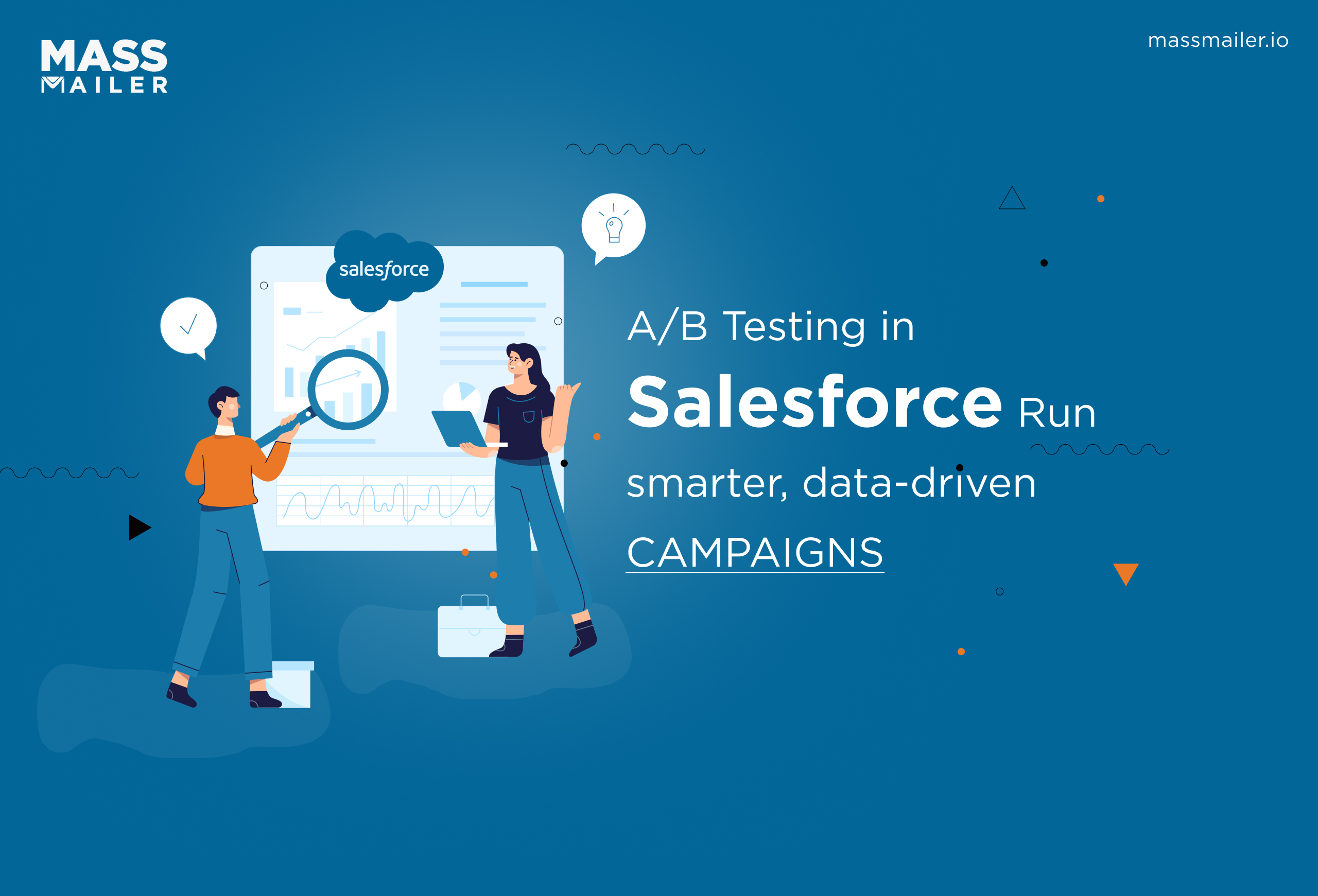
A/B Testing in Salesforce: A Step-by-Step Guide to Boost Email Campaigns
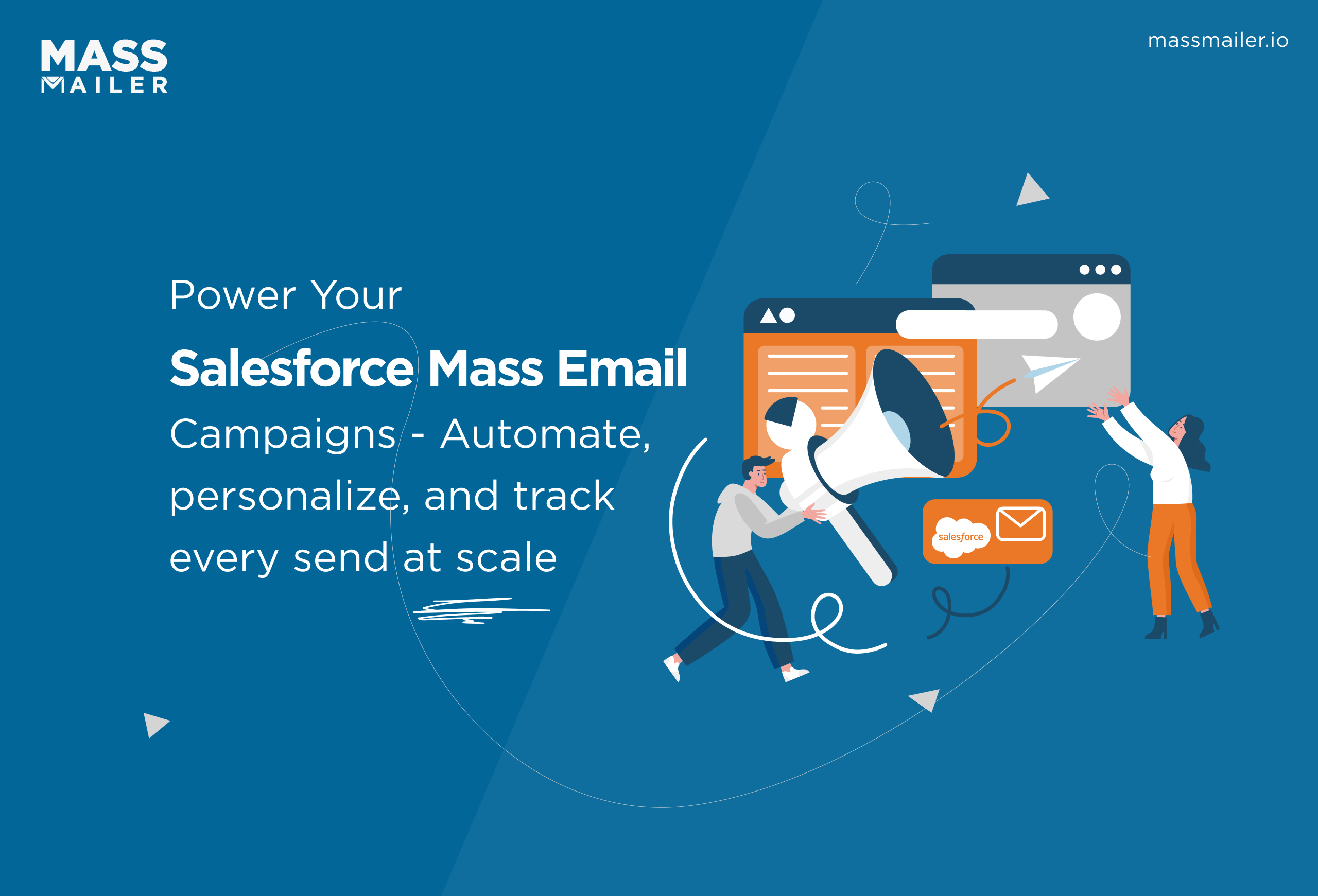
Mastering Salesforce Mass Email Campaigns: Best Practices & Tools
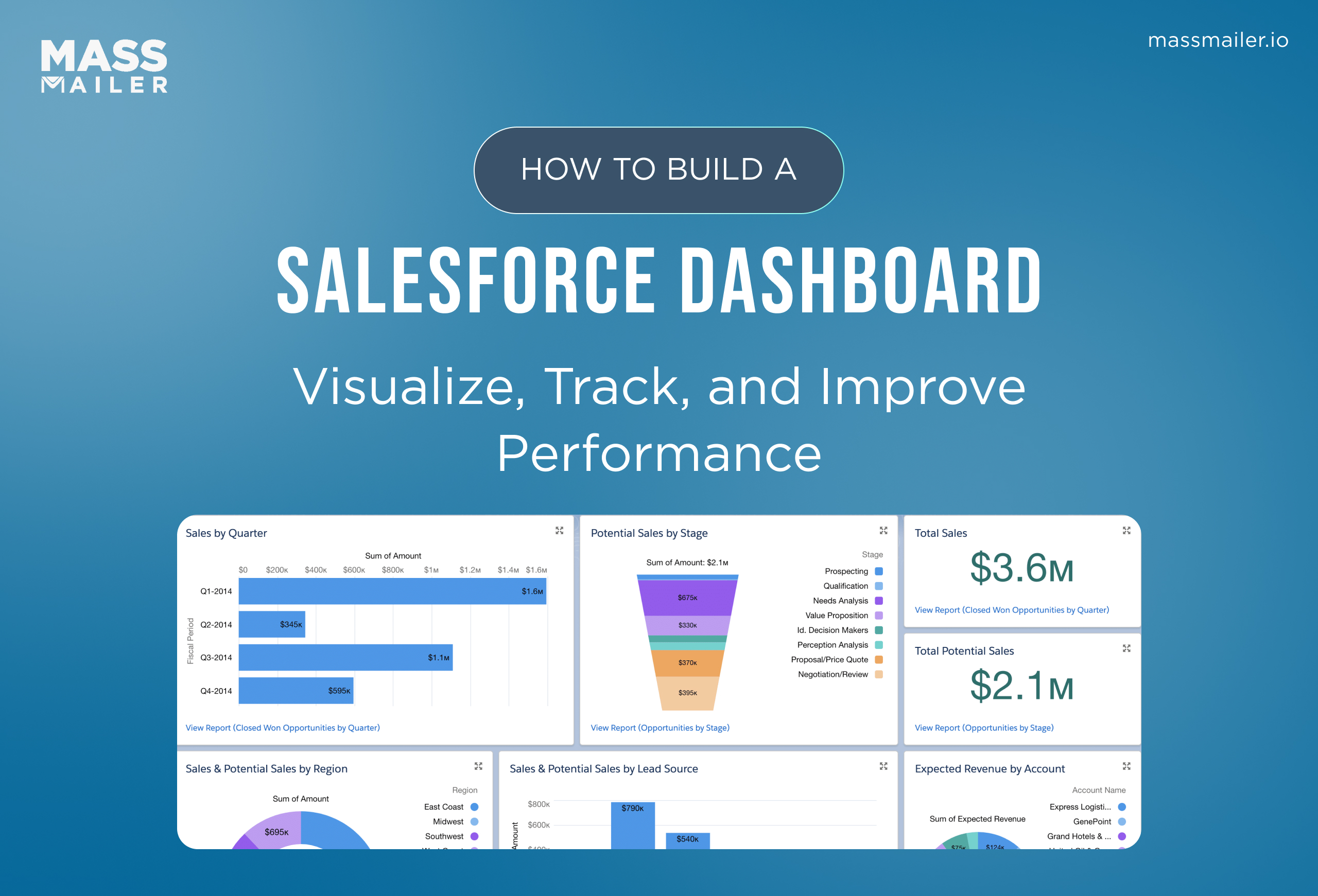
How to Build Salesforce Dashboards for Actionable Insights & Success
MassMailer Resources



